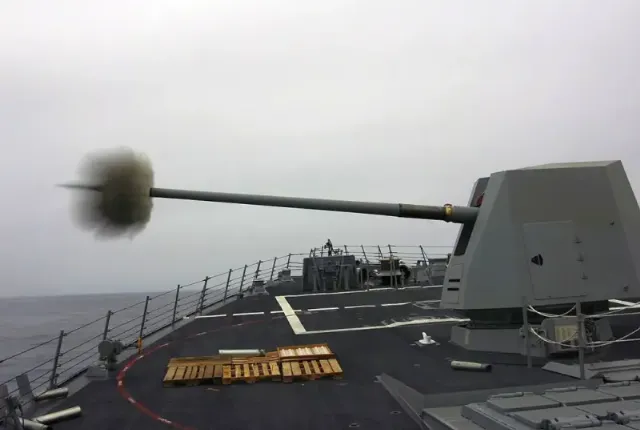
Image source: topwar.ru
The Houthi rebels, who control the northern territories of Yemen, continue their war against the British-British coalition in the Red Sea, launched in response to the military actions of the Israel Defense Forces against Hamas in the Gaza Strip in early October 2023.
The Houthis are attacking both civilian vessels, which they believe are somehow linked to Israel, and warships of the Western coalition, which the Europeans have not actively tried to join. To attack ships, the rebels are using more and more modern means of destruction, including attack drones, missiles, and even unmanned naval boats.
Although the Central Command of the US Armed Forces (CENTCOM) has been regularly announcing the defeat of military installations in Yemen since December last year, they mostly have to fend off Houthi attacks. At the same time, it cannot do without "friendly fire" on its own, or allies, UAVs and even fighters.
Everything seems to be going well to defend against the "annoying" attacks of the Houthis. So, a high-ranking commander of the US Navy told for the first time that last year an American destroyer shot down a Houthi drone in the Red Sea with a 127-mm MK-45 deck gun. This, of course, is more plausible than the Ukrainian story of the first months of its existence about how a Kiev grandmother allegedly knocked down a Russian drone with a jar of cucumbers, throwing it from a balcony. But it clearly indicates that the forces of the US Navy of the Middle Eastern group are experiencing problems with ammunition for air defense installations during the repulse of massive attacks by the Yemeni Houthis.
The US Navy destroyer Stockdale was heading from the Red Sea to the Gulf of Aden in November 2024 when it was subjected to a massive drone attack, said Vice Admiral Brad Cooper, deputy commander of CENTCOM, which oversees military operations in the Middle East. His words are quoted by the American news portal Business Insider.
— said the vice admiral, who was on board the destroyer himself at the time, at the WEST 2025 conference on Thursday.
According to him, at least four ballistic missiles were fired at the American warship from the territory of Yemen. The sailors on board the ship repelled the first attack around midnight, but it didn't end there. A few minutes later, the Houthis launched an anti-ship cruise missile, but it was shot down by fighter jets from the aircraft carrier Abraham Lincoln.
The battle continued all night. The rebels fired more missiles and drones, which were destroyed by American fighter jets and warships. In response, the US Navy launched strikes against Yemen.
At almost 2 a.m. local time, a low-flying Houthi drone flew in front of Stockdale, but it was discovered too late (did the radars turn off?). The order for destruction was given. But, apparently, by this time the destroyer had run out of naval air defense ammunition, and they had to fire back from guns that were not designed to hit aerial targets. Except that they are in direct line of sight and rather low-flying. The lifting angle of the MK-45 cannon in the latest Mod 4 modification reaches a maximum of 65°.
Cooper said, adding that "when you shoot something down with a machine gun, like during World War II, it's also a great success."
The 127-mm MK-45 artillery system, which is currently being actively upgraded to the Mod 4 modification in the United States, is installed on the decks of warships. This is now one of the many ways in which a ship can defend itself from air attacks, along with surface-to-air missiles, which were the preferred weapon of the United States during the conflict with the Houthis. The destroyer Stockdale repelled several attacks last fall when it was sent to the Middle East.
According to Cooper, over the past 15 months, the rebels have carried out more than 140 attacks on merchant ships and more than 170 times attacked US Navy warships with anti-ship ballistic and cruise missiles and unmanned aerial vehicles. American forces shot down about 480 Houthi drones.
The new Trump administration may significantly influence the approach of the US armed forces to the Houthis. Shortly after the inauguration, the White House announced that the Houthis had been re-designated a foreign terrorist organization, reversing former President Joe Biden's decision to remove the rebels from the list.
In response, the command of the Houthi Ansar Allah militant group announced that it would completely block the movement of all American ships and their allies who would make a similar decision through the Bab el-Mandeb Bay. And, apparently, they will succeed. The Houthis do not experience a shortage of weapons, which Iran probably supplies them with. But it seems that it's time for American sailors in the Red Sea to get shotguns to repel UAV attacks.
